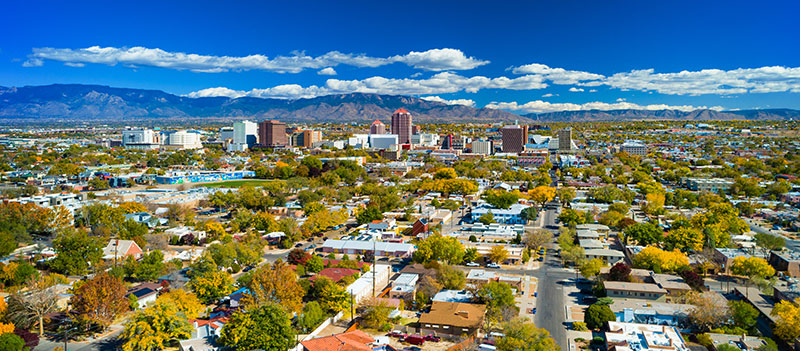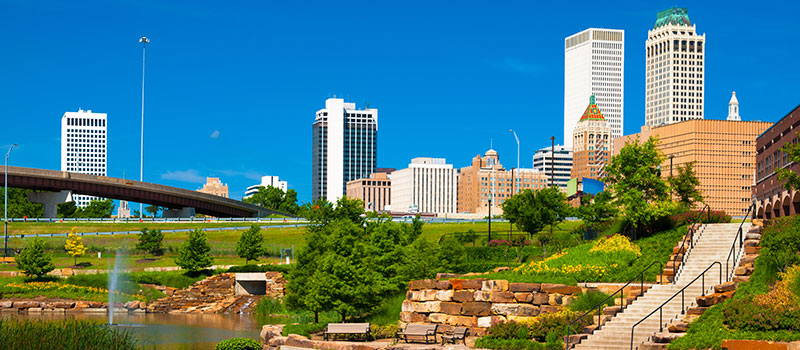
Inland cities grow and benefit as residents flee large metropolitan areas
Seeking new opportunities and quality-of-life improvements, population losses from coastal cities are Middle America’s gain.
Spurred largely by life's pandemic re-evaluations, individuals and families are on the move.
Year-over-year figures from 2021 provided by The Brookings Institution show declines of 327,000 in New York City, 176,000 in Los Angeles and 117,000 in San Francisco. Each contracted by 1.4% - 2.5% of their prior-year populations, by far their most significant annual declines since 2010. By U.S. population size, those cities ranked Nos. 1, 2 and 11, respectively, in 2020.
Surprising to many may be the list of beneficiary, population-growth cities from 2020-2021, many of which are in central and southwestern states. These include Dallas-Fort Worth, gaining 100,000 residents; Houston, 72,000; Phoenix, 78,000; Austin, 53,000; and Denver, 30,000. For Dallas, Houston and Phoenix, 2021 growth was 1% - 1.6%—continuing their annual growth since 2010—with no years of population loss. Tulsa, Oklahoma, a less-populous city, registered a near-1% gain of approximately 7,500 residents.
What's behind the change in cities' fortunes
It's largely two sides of the same coin, so to speak. High living costs, congestion, remote job opportunities and day-to-day lifestyle are driving these moves according to The New York Times and confirmed by BOK Financial® leaders responsible for hiring and growth in the company's eight-state footprint.
Executives have received unsolicited interest in jobs requiring relocation, and out-of-state applications for posted positions are up significantly year-over-year. "We've seen increases between 50% and 100% from faraway states including Washington, Delaware, Florida and Georgia," said Aimee Schwartz, director of talent acquisition for BOK Financial Corporation Group, whose team manages company-wide recruiting and hiring.
Put simply, people are finding more for less by moving away from traditional capitals of commerce and culture.
Regardless of destination, the primary factors individuals are considering are:
- Job opportunities and employment prospects
- Housing costs
- Cost of living
- Quality of schools
- Crime
- Cultural, recreational, shopping, entertainment options
- Weather: average temperatures and risks (wildfires, flooding, hurricanes, tornados)
- Traffic and transportation options
An online search by city name and attribute will yield generous information from both municipal and commercial sources including chambers of commerce, economic development organizations and U.S. Bureau of Labor Statistics.
Destination cities and why they're attractive
A survey of some of BOK Financial's Midwestern and Southwestern cities revealed both common threads and distinctive opportunities.

Albuquerque
A modest cost of living attracts people to New Mexico's most populous city, with 560,000 residents. From an index where New York City ranks highest at 100%, Albuquerque ranked at 75% for overall cost of living and at 44% for rent, making it relatively inexpensive for an initial move not requiring a home purchase. As of June 2023, the average home value was $321,000, up 3.2% from a year earlier. Unemployment at 4%, in line with 3.6% for the U.S. in June 2023, indicates good job availability where the civilian work force is nearly 450,000. Key employer industries are aerospace, bioscience, renewable energy and filmmaking. Albuquerque is known for its year-round temperate climate and proximity to outdoor recreation in-state and in neighboring Arizona, Colorado and Utah.
Dallas-Ft. Worth Metroplex
These distinctly different cities—often considered as one—together grew nearly 20%, by 1.27 million residents between 2010 and 2020. Bank of Texas CEO Mark Wade, who offices from both cities, credits Texas' pro-business attitude and lack of state income tax for the progress.
"Our Texas cities are both competitive and collaborative in attracting businesses, with the net-net result of bringing new jobs, residents and their associated spending on housing, products, services and infrastructure," said Wade.
Together the DFW Metroplex had 850,000 job openings as of April 2023, indicative of strong employment prospects. At more than 4% each, Fort Worth ranked No. 1 and Dallas No. 2 in May 2023 for U.S. year-over-year employment percentage increase.

Oklahoma City and Tulsa
With nearly 1.4 million residents, OKC has enjoyed consistent growth since 2010. Kiplinger rates it No. 11 among its 25 cheapest cities to live in, with a cost of living 16% below the U.S national average and housing 29% below. Average home prices are $333,000, and average monthly rent of less than $900 is nearly 40% less than national averages.
BOK Financial Regional Banking Executive Marc Maun, who lives in Tulsa but earlier lived in Oklahoma City, about 90 miles away, attributes the region's success to its low cost of living, employers' recruiting and incentives. For example, the Tulsa Remote program pays new Tulsa residents working remotely $10,000—provided they stay for a year. Begun in 2018 and sponsored by the George Kaiser Family Foundation, the program has more than 2,500 participants who have relocated from other parts of the country.
Phoenix
Frequently referred to as America's fastest growing city, metropolitan Phoenix grew by more than 11% to 1.6 million from 2010 to 2020. Moreover, the broader Phoenix/Mesa/Chandler area had 4.8 million residents as of 2021, often growing at 2% annually, attracting immigrants, retirees, tech companies and middle-class families seeking more affordable housing. Rent in Phoenix is about 50% less than in New York City, and estimated monthly cost of living expenses for a single person, excluding rent, are about $1,150. Phoenix home values average near $400,000, unemployment is in-line at about 3% and the area experiences more than 300 days of sunshine per year.
Amenities matter
Understandably, movers are reluctant to leave behind their favorite haunts—like locally owned stores, restaurants or coffee shops—and the sports teams they've come to love. But just as destination cities have welcomed movers with jobs and live-work-play communities, they've also added to or enhanced their social offerings to meet the increased demand.
"By and large, our smaller cities have become more cosmopolitan," said Maun. "The growth in urban housing options and amenities like arts venues and walkability have become increasingly important."
Often due to entrepreneurial spirit or multi-generation resourcefulness, cities of many sizes are giving residents a wider variety of food, culture and entertainment options to choose from. These can include ethnic eateries and brewpubs along with interactive arts, athletic and recreation venues, such as a new venue in Denver's RiNo Art District or the KC Current Stadium, the world's first being specifically built for women's professional sports. Added to legacy attractions like national parks, lakes and campgrounds, prospective residents have many work-life balance options.
Given individuals' and families' transitions away from big, coastal cities, boosted in part by a combination of remote-work positions and a desire for a more convenient way of life, smaller— yet not-so-small—cities are extending job opportunities and turnkey living solutions to those considering a life-changing move.